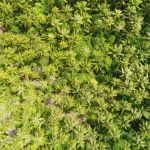RESEARCH PROJECTS
PI-CASC supports research that generates actionable climate science within several key focus areas defined by regional stakeholder needs.

Development of new technologies and techniques to advance wildlife monitoring and improve management of endangered Hawaiian bird species in a changing climate
PI: Patrick Hart, Professor of Biology, UH Hilo
Co-Is: Amanda Navine, TCBES, UH Hilo; Ann Tanimoto-Johnson, TCBES, UH Hilo; Bret Mossman, Hawaiʻi Island Avian Technician, DOFAW
Funded: FY2023
Co-Is: Amanda Navine, TCBES, UH Hilo; Ann Tanimoto-Johnson, TCBES, UH Hilo; Bret Mossman, Hawaiʻi Island Avian Technician, DOFAW
Funded: FY2023
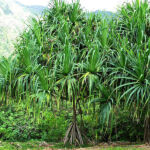
Lauhala: Weaving knowledge and practices with a climate resilient and culturally significant plant on Hawaiʻi Island
PI: Noa Kekuawa Lincoln, Associate Researcher, CTAHR, UH Mānoa
Co-Is: Udi Mandel Butler, Climate Action Program Manager, Hawaiʻi Climate Change Commission; Kū Kahakalau, Executive Director, Kū-A-Kanaka
Funded: FY2023
Co-Is: Udi Mandel Butler, Climate Action Program Manager, Hawaiʻi Climate Change Commission; Kū Kahakalau, Executive Director, Kū-A-Kanaka
Funded: FY2023
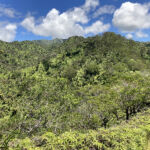
Climate smart restoration: Establishing baselines and developing adaptive management approaches
PI: Michala Phillips, Research Ecologist, USGS Pacific Island Ecosystem Research Center
Co-Is: Corie Yanger, Botanical Research Technician, USGS PIERC; Aurora Kagawa-Viviani, Asst. Professor of Geography, WRRC, UH Mānoa
Funded: FY2023
Co-Is: Corie Yanger, Botanical Research Technician, USGS PIERC; Aurora Kagawa-Viviani, Asst. Professor of Geography, WRRC, UH Mānoa
Funded: FY2023

2023 SURF Projects
Four students completed projects in climate adaptation science for the 2023 SURF program, investigating how forests vegetation shifts in response to climate change, the connection between climate and humpback whale health, whether added nutrients can improve coral thermal resilience, and sea-level rise impacts to community infrastructure.
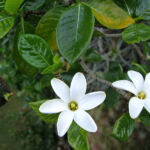
Assessing the success and vulnerability of Hawaiian rare plant introductions to inform future stabilization efforts
PI: Tamara Ticktin, Professor of Botany, UH Mānoa
Co-Is: Clay Trauernicht, Associate Specialist, UH Mānoa; Tim Chambers, Center for Plant Conservation Officer, ANRPO; Lucas Fortini, Research Ecologist, PIERC, USGS; Julia Douglas, School of Life Sciences, UH Mānoa
Funded: FY2023
Co-Is: Clay Trauernicht, Associate Specialist, UH Mānoa; Tim Chambers, Center for Plant Conservation Officer, ANRPO; Lucas Fortini, Research Ecologist, PIERC, USGS; Julia Douglas, School of Life Sciences, UH Mānoa
Funded: FY2023
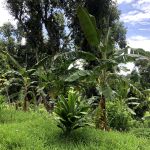
Enhancing social-ecological resilience through restoration of coastal agroforestry systems
PI: Leah Bremer, Assistant Specialist and Conservation Scientist, UH Mānoa
Co-PI: Tressa Hoppe, Botany Department, UH Mānoa
Funded: FY2022
Co-PI: Tressa Hoppe, Botany Department, UH Mānoa
Funded: FY2022
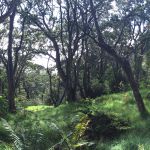
Improving tools to monitor bird abundance and detect mosquito invasion in Hakalau Forest
PI: Patrick Hart, Professor of Biology, UH Hilo
Co-PIs: Josephine Tupu, TCBES, UH Hilo; Donna Ball, Deputy Refuge Manager, Hakalau Forest NWR
Funded: FY2022
Co-PIs: Josephine Tupu, TCBES, UH Hilo; Donna Ball, Deputy Refuge Manager, Hakalau Forest NWR
Funded: FY2022

Developing a Pacific mangrove monitoring network (PACMAN) in response to sea-level rise
PI: Richard Mackenzie, Research Ecologist, USDA FS Pacific Southwest Research Station
Co-PI: Maybeleen Apwong, TCBES, UH Hilo
Funded: FY2022
Co-PI: Maybeleen Apwong, TCBES, UH Hilo
Funded: FY2022
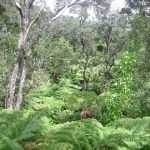
Developing a climate-resilient restoration approach combining functional, climate, and geographic data
PI: Rebecca Ostertag, Professor of Biology, UH Hilo
Co-PIs: Konapiliahi Dancil, TCBES, UH Hilo; Jonathan Price Professor of Geography, UH Hilo
Funded: FY2022
Co-PIs: Konapiliahi Dancil, TCBES, UH Hilo; Jonathan Price Professor of Geography, UH Hilo
Funded: FY2022

2022 SURF Projects
Five students completed projects in climate adaptation science for the 2022 SURF program, investigating fire-prone invasive grasses, spillover effects of Marine Protected Areas, shifts in estuarine fish biodiversity, optimal regeneration conditions for koa, and effects of marine warming on different phytoplankton strains.
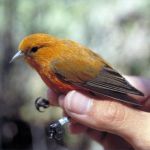
Predicting and mitigating avian disease at Hakalau Forest National Wildlife Refuge
PI: Dennis LaPointe, Research Ecologist, USGS Pacific Island Ecosystems Research Center
Funded: FY2021
Funded: FY2021

Field surveys for vanishing Hawaiian land snail species
PI: Jonathan Price, Professor of Geography, UH Hilo
Funded: FY2021
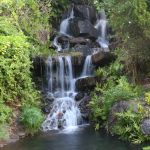
How do Hawaiʻi stakeholders use and contribute to land-to-sea ecosystem service analyses
PI: Clay Trauernicht, Ecosystem and Fire Extension Specialist, NREM, UH Mānoa
Funded: FY2021
Funded: FY2021

Enhancing social-ecological resilience and ecosystem services through restoration of coastal agroforestry systems
PI: Leah Bremer, Assistant Specialist and Conservation Scientist, UH Mānoa
Co-PI: Gina McGuire, Department of Geography, UH Mānoa
Funded: FY2020
Co-PI: Gina McGuire, Department of Geography, UH Mānoa
Funded: FY2020


